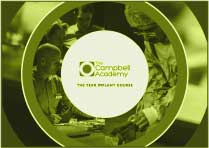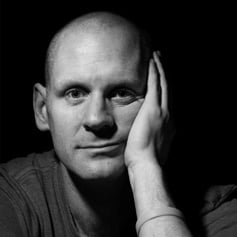
It’s 10 years this year since I got my first CBCT machine at the practice, it was a Carestream 9000 and I was one of the first few in the country to have that machine.
This machine was a revelation with a small field of view and therefore acceptable reasons to take CBCTs for single tooth gaps in the lower.
The dose comparison data at that stage was favourable for Carestream, as produced by Ludlow around the early 2000’s where he compared all the machines he could get his hands on.
It was all relative though – the dose was still pretty high on the 9000 but it was lower than the rest of the machines and lower than medical CT which is where we were at that time.
The machine was installed and we had about a two-hour training session from the engineer (who was great, but not a CBCT trainer) and away we went and started to take CBCTs.
On the first one I missed everything and I’m not sure what I examined but it was probably something like the wall of the CBCT room! I still have that CBCT and I could pull it up to see how terrible it actually was.
There was nothing in place to learn, no one to teach me, so we spent hours figuring it out, debunking it and debugging it. Reading the books that were mostly produced in the US about how to interpret CBCT scans.
Moving on we went to Bern and looked at what they were doing with their Morita CBCT machine, the images from which were absolutely unbelievable (but it turned out the doses were pretty high too) and in the end we hitched up with Michael (Bornstein) and got him over here to do a one-day Master Class to try to teach us how to report our CBCTs better.
At dinner at that Master Class with Michael Bornstein we wrote down on a fag packet what a CBCT course would look like and why. So, the course that we provide once a year now with me, Andy and Michael Bornstein was born on the back of a napkin in a restaurant in Nottingham!
The thing about this stuff though it that it moves along and it moves on and now you can do online CBCT training for about £5 if you just want to tick a box. If that’s what you’re looking for then steer clear of this course because it’s absolutely not that.
What this course is designed to do is to teach you how to report CBCTs in your practice so that it’s valuable. It teaches you how to medically report CBCTs and it teaches you how to functionally report CBCTs.
A radiologist can report a CBCT, but only an implant surgeon can functionally report it for placing implants and only an endodontist can report it for endodontics. The reason for that is that true radiologists don’t provide the treatment, so there is always a tension between the operator and the interpreter. So to train the operator to interpret is to turn the surgeon into a physician.
Perhaps I haven’t been absolutely clear at times what this course is for, but that’s what it’s for and the way you do that is to give people scans, ask them to report them and then mark them and feed them back.
That’s how you teach, define and prove competency.
On our course Michael does the reporting but we’ve changed it this year again to include ultra-low dose research to try to now move CBCT along. To show people how to use the machines to radiate patients less and how to select machines that will radiate patients less, therefore advancing and improving CBCT usage in the UK.
As an example of that, I have started to post-operatively CBCT some of my implant patients because I know that on an ultra-low dose protocol on an appropriate machine (we are now using the Planmeca after having a Sirona, after first having a Carestream) that we can CBCT an upper arch in an 8 x 5cm field of view for about the same as 3 periapical radiographs.
Think about that for a minute and understand how it changes the game in the quality of the work you provide.
Worse still, imagine CBCT-ing your post-op sinus grafts (I’ve just started to do this) An immediate CBCT of your sinus graft to see how good it was (or not) and to see if there is any other action that needs to be taken or to see if you need to keep a closer eye on a patient as they move forwards.
While I realise this might make some people uncomfortable, it will also make them better.
Finally, on CBCT now, almost everyone needs to understand the integration of this into a digital workflow of one form or another and that’s included as part of our course.
Our course isn’t cheap (in fact I think it’s the dearest)
It’s not supposed to be cheap, it’s supposed to be good.
It makes no difference if I tell you that it’s good or not, but two years ago Stephen Jacobs (him who was the former President of the ADI, an innovative implant surgeon from Glasgow) came on the course and recently he sent me a comment on the blog to say this:
“Completing the Campbell (Legg) Academy CBCT course took me to a new level of understanding and interpreting CT scans. Rather than just measuring bone, I am now confident in fully reporting the anatomy and findings in the upper and lower jaws, together with the wider anatomy such as paranasal sinuses. Two cases of SCC have been picked up as a result!"
We restrict the numbers on the course to make sure people get the experience Stephen did and the course is even better now than it was then.
If you’re interested, here’s the link.
Blog Post Number: 1891






Leave a comment